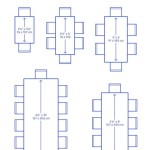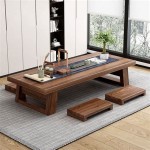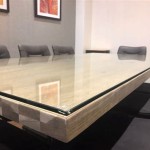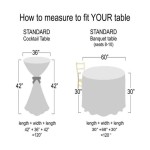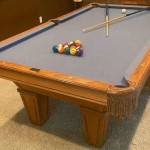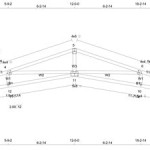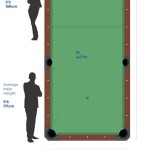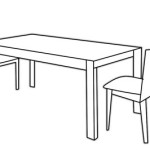West Elm Farmhouse Dining Table: A Comprehensive Overview
The West Elm Farmhouse Dining Table represents a blend of rustic charm and modern design, offering a versatile centerpiece for various dining spaces. This article will explore the key features, design considerations, material composition, available sizes, and potential drawbacks associated with this popular furniture item. Understanding these factors is crucial for making an informed purchasing decision that aligns with individual needs and aesthetic preferences.
The essence of the Farmhouse style lies in its ability to evoke a sense of warmth and authenticity. The West Elm interpretation aims to capture this essence while incorporating contemporary design elements. The result is a table that can seamlessly integrate into both traditional and modern interiors, offering a touch of the countryside without sacrificing urban sophistication.
Key Feature: Solid Wood Construction and Durability
One of the defining characteristics of the West Elm Farmhouse Dining Table is its construction, typically utilizing solid wood or wood veneer over engineered wood. The use of solid wood, depending on the specific model, contributes significantly to the table's durability and longevity. Hardwoods like mango wood, acacia, or kiln-dried eucalyptus are often employed, offering resistance to dents, scratches, and warping. This robustness is a crucial consideration for a piece of furniture that is intended for daily use and potential exposure to spills and impacts.
The solid wood construction also lends itself to a timeless aesthetic. The natural grain patterns and variations in the wood create a unique visual appeal that cannot be replicated by synthetic materials. Over time, the wood develops a patina, enhancing its character and adding to its overall charm. This makes the table not just a functional piece of furniture, but also a potential heirloom that can be passed down through generations.
Even when using veneer over engineered wood, West Elm prioritizes quality. The veneer is carefully applied to ensure a smooth, seamless surface that mimics the appearance of solid wood. The engineered wood core provides stability and resistance to moisture, further contributing to the table's durability. The combination of veneer and engineered wood can also offer a more cost-effective alternative to solid wood construction, making the Farmhouse Dining Table accessible to a wider range of customers.
The durability extends to the table's base as well. Sturdy legs, often crafted from solid wood or metal, provide ample support and stability. The legs are typically designed to withstand significant weight, ensuring that the table can accommodate large gatherings and heavy dishes. The construction of the legs also plays a vital role in the overall aesthetic of the table, with various styles available to complement different design preferences.
Design Considerations: Versatility and Aesthetic Appeal
The design of the West Elm Farmhouse Dining Table emphasizes versatility. Its clean lines and simple silhouette allow it to seamlessly blend into a variety of interior styles. Whether the dining room is decorated in a traditional farmhouse aesthetic, a modern industrial style, or a minimalist contemporary design, the table can serve as a cohesive element.
The availability of different finishes further enhances the table's versatility. Options range from natural wood tones that showcase the grain's inherent beauty to painted finishes in neutral colors like white, gray, or black. These finishes allow customers to customize the table to match their specific color palette and design preferences. A lighter finish can brighten up a smaller space, while a darker finish can add depth and sophistication to a larger room.
The shape of the tabletop is another design consideration. Rectangular tables are a classic choice for larger dining rooms, providing ample seating space for family gatherings and dinner parties. Round tables, on the other hand, are ideal for smaller spaces, promoting conversation and creating a more intimate atmosphere. Oval tables offer a compromise between the two, combining the seating capacity of a rectangular table with the conversational benefits of a round table.
Beyond its primary function as a dining surface, the table can also serve as a focal point in the room. Its size and presence naturally draw attention, making it an ideal spot for displaying decorative items such as vases, candles, or centerpieces. The table can also be used as a workspace, providing a comfortable and spacious surface for working from home or pursuing creative projects.
The design often includes subtle details that enhance its overall appeal. These details may include exposed joinery, beveled edges, or a slightly distressed finish. These elements add character and visual interest to the table, making it a standout piece of furniture that elevates the entire dining space. The intention is to create a table that is both functional and aesthetically pleasing, enhancing the overall dining experience.
Analyzing Material Composition and Potential Drawbacks
While the West Elm Farmhouse Dining Table is generally well-regarded for its quality and design, it is crucial to consider the material composition and potential drawbacks before making a purchase. The specific materials used can vary depending on the model, impacting its price, durability, and maintenance requirements. Understanding these differences is essential for making an informed decision.
As mentioned earlier, solid wood construction offers superior durability and longevity. However, solid wood is also more susceptible to changes in humidity and temperature, which can lead to warping or cracking over time. Proper maintenance, including regular cleaning and the use of wood conditioners, is essential for preserving the integrity of solid wood furniture. Solid wood tables also tend to be heavier, making them more difficult to move.
Veneer over engineered wood offers a more stable and cost-effective alternative. Engineered wood is less prone to warping and cracking than solid wood, making it a suitable option for environments with fluctuating humidity levels. However, veneer can be susceptible to scratches and chips, particularly if not properly cared for. It is also important to note that veneer cannot be refinished like solid wood, limiting its lifespan.
The finish applied to the table can also impact its durability and maintenance requirements. Painted finishes are generally more resistant to scratches and stains than natural wood finishes, but they can chip or peel over time. Natural wood finishes, on the other hand, highlight the wood's natural beauty but may require more frequent maintenance to protect against water damage and stains.
Another potential drawback to consider is the size and weight of the table. Farmhouse dining tables tend to be larger than standard dining tables, requiring ample space in the dining room. It is crucial to measure the dining room carefully before purchasing the table to ensure that it fits comfortably and allows for adequate movement around the table. The weight of the table can also be a concern, particularly for those who live in apartments or have difficulty lifting heavy objects. Delivery and assembly options should be considered to avoid potential difficulties.
Finally, price is a significant factor for many consumers. The West Elm Farmhouse Dining Table is generally priced higher than mass-produced dining tables, reflecting the quality of materials and craftsmanship. However, the price can vary depending on the size, material, and finish. It is essential to compare prices and consider the long-term value of the table before making a purchase. Investing in a durable and well-designed table can be a worthwhile investment that provides years of enjoyment.
Ultimately, the West Elm Farmhouse Dining Table offers a compelling combination of style, durability, and functionality. By carefully considering the key features, design considerations, material composition, and potential drawbacks, consumers can determine whether this table is the right fit for their individual needs and aesthetic preferences. The table represents a long-term investment and thoughtful choices are essential.

Modern Farmhouse Dining Table Cerused Carob West Elm

Modern Farmhouse Dining Table Cerused Carob West Elm

Emmerson Reclaimed Wood Rectangle Dining Table 62 72 87 West Elm

Modern Farmhouse Dining Table Cerused Carob West Elm

Emmerson Reclaimed Wood Rectangle Dining Table 62 72 87 West Elm

Modern Farmhouse Dining Bench Dark Mineral West Elm

Anderson Solid Wood Expandable Dining Table 40 90 West Elm

The Best West Elm Dining Tables For Every Space Wood Table Solid Bench

Modern Farmhouse Dining Bench Dark Mineral West Elm

Extra Deep Mid Century Expandable Dining Table 72 92 Acorn West Elm

